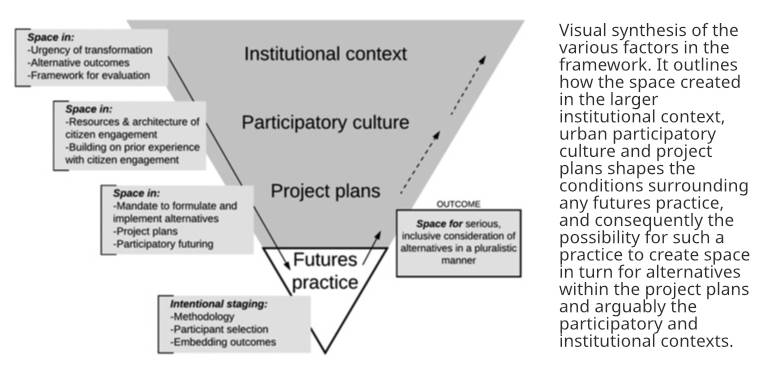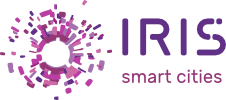
In a new paper published at Elsevier’s Cities Journal, Astrid Mangnus et al took on the challenge crucial for many organizers of participatory futures practices. How to use ‘futuring’ to design citizen engagement and create space for alternative solutions in the middle of ongoing sustainability transformations?
While a large section of the literature on futures studies and citizen engagement focuses on the conditions for success many of these conditions are oftentimes imperfect. Building on literature on participatory futures and anticipatory governance, the authors developed a framework that comprises four factors that shape the effectiveness of participatory futures practices in their contexts and explicitly includes the participatory culture.
The framework consists of:
- the space in the institutional landscape of a multi-stakeholder project;
- the participatory culture around the project;
- the project development;
- and the futures practices itself.
The framework was applied to design citizen engagement with the support of futures tools in three “lighthouse” cities that are part of the international, multi-city H2020 IRIS Smart Cities project. From the results, they concluded that under imperfect conditions it is still possible to find and optimize space for exploring and re-imagining different pathways to urban transformation, provided that there is an intentional engagement with the context, culture and sustainability transformation project plans.

Visual synthesis of the various factors in the framework. It outlines how the space created in the larger institutional context, urban participatory culture and project plans shapes the conditions surrounding any futures practice, and consequently the possibility for such a practice to create space in turn for alternatives within the project plans and arguably the participatory and institutional contexts.
In each city, project members participated in sessions where they designed citizen engagement using a futures methodology: the novel Scope and Ladder models. Each city reflects a different combination of the four contextual factors. They found that space for exploration and re-imagining can be found and optimized under imperfect conditions. Drawing on the results of the three cases, they drawn a set of recommendations for the funders, project members and futures organizers of urban sustainability transformation projects.
With the right process design, citizen engagement processes can open up space for observation, reflection, interpretation, discussion and expression for all parties involved. This paper is a step forward on developing the right design for citizen engagement.
Read it full here: https://authors.elsevier.com/sd/article/S0264-2751(21)00365-6
15 Dec 2021

